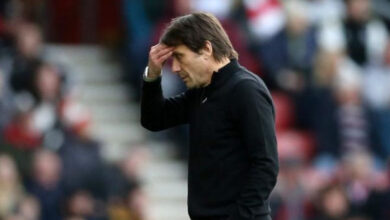The political landscape in 2025 reflects a world in transition. Old alliances are being tested, new power centers are rising, and global challenges like climate change, migration, and digital transformation are reshaping international relations.
Understanding these shifts is essential for predicting the future of democracy, stability, and the global economy. This article explores the major geopolitical trends of 2025, with a detailed look at key players, regional dynamics, and health of international cooperation.
🔑 Key Global Political Trends in 2025
1. US-China Rivalry: The Defining Battle of the Century
The United States and China remain at the heart of global politics. Their rivalry is not limited to economics—it spans technology, military, ideology, and global influence.
- Technology War: Control over AI, semiconductors, and cybersecurity defines who leads the future digital economy.
- Military Balance: Tensions in the South China Sea and over Taiwan remain high.
- Global Influence: While the U.S. maintains strong ties with NATO and Asian allies (Japan, South Korea, Philippines), China expands influence via BRICS+ and Belt and Road Initiative.
- Ideological Divide: Democracy vs. authoritarian capitalism sets the stage for a divided world order.
👉 Expect: Rising trade barriers, cyber conflicts, and proxy competition in Africa, Asia, and Latin America.
2. Russia and Eastern Europe: Energy and Security Politics
Russia continues to project influence despite sanctions and economic pressure. Its strategy in 2025 revolves around energy leverage, military presence, and alliances with non-Western powers.
- Ukraine & NATO: The ongoing war and Western support for Ukraine keep Europe in constant geopolitical tension.
- Energy Politics: Russia redirects oil and gas exports to Asia while Europe accelerates its transition to renewable energy.
- Strategic Alliances: Russia strengthens ties with China, Iran, and parts of Africa to counter U.S.-EU dominance.
👉 Expect: A fragmented Europe facing high security costs and a reshaped energy market.
3. European Union: Balancing Unity and Internal Struggles
The EU stands at a crossroads in 2025. While it champions climate diplomacy and democratic values, it faces internal political fractures:
- Immigration & Refugees: Rising flows from Africa, the Middle East, and climate-hit regions strain EU unity.
- Green Deal Transition: Balancing environmental goals with economic competitiveness is politically divisive.
- Defense Autonomy: Debates grow on whether Europe should rely less on NATO and build stronger EU-led defense.
- Rise of Populism: Far-right and nationalist parties gain traction, threatening EU integration.
👉 Expect: The EU to push climate leadership globally while struggling with internal unity.
4. Middle East: Energy, Alliances, and Ongoing Conflict
The Middle East remains a focal point of energy politics and security risks.
- Oil and Gas: The global green transition reduces long-term oil dependency, but the region still holds geopolitical weight.
- Israel-Palestine Conflict: Remains unresolved, fueling instability.
- Iran & Gulf States: Nuclear ambitions and proxy conflicts shape alliances.
- Regional Realignments: New partnerships emerge—such as Saudi Arabia balancing ties with the U.S., China, and Russia.
👉 Expect: Continued instability but also attempts at economic diversification (e.g., Saudi Vision 2030).
5. Climate Change Diplomacy: The New Global Power Game
In 2025, climate change is no longer just an environmental issue—it’s a geopolitical weapon.
- Green Superpowers: Countries leading in renewable tech (EU, U.S., China) set global trade standards.
- Global South: Demands greater support for climate adaptation and funding.
- Food Security: Droughts, floods, and heatwaves drive migration and conflict over resources.
👉 Expect: Climate to become as decisive in international negotiations as nuclear weapons once were.
🌍 The Future of Democracy
- Backsliding: Democracies in Eastern Europe, Africa, and parts of Asia face erosion under authoritarian leaders.
- Digital Challenges: AI-driven surveillance, misinformation, and election interference test democratic resilience.
- Youth & Activism: Young voters push for digital rights, climate justice, and inclusive politics, offering hope for renewal.
💡 Global Challenges Ahead
- Geopolitical Conflicts – Proxy wars, cyberattacks, and military escalation.
- Economic Risks – Trade wars, inflation, and debt crises.
- Climate & Migration – Rising climate refugees strain borders.
- Technology Divide – AI and digital governance create winners and losers.
📊 Global Politics 2025 at a Glance
| Region / Issue | Trend / Challenge | Impact on Global Politics |
|---|---|---|
| US-China | Tech, trade, military rivalry | Divided global order |
| Russia-EU | War, sanctions, energy politics | Security & energy instability |
| European Union | Populism, immigration, green deal | Internal unity under pressure |
| Middle East | Energy, conflict, new alliances | Volatile but influential |
| Climate Diplomacy | Green tech race, adaptation funding | Shapes future global economy |
✅
World politics in 2025 is defined by competition, transformation, and uncertainty. The rivalry between superpowers, the struggle for climate leadership, and the battle between democracy and authoritarianism will shape the coming decades.
🌍 The future depends on whether nations choose cooperation or confrontation. One thing is certain: global politics is no longer dominated by one power but by a multipolar world where every decision reverberates across borders.






